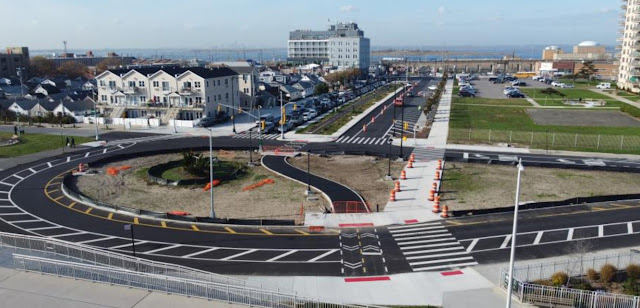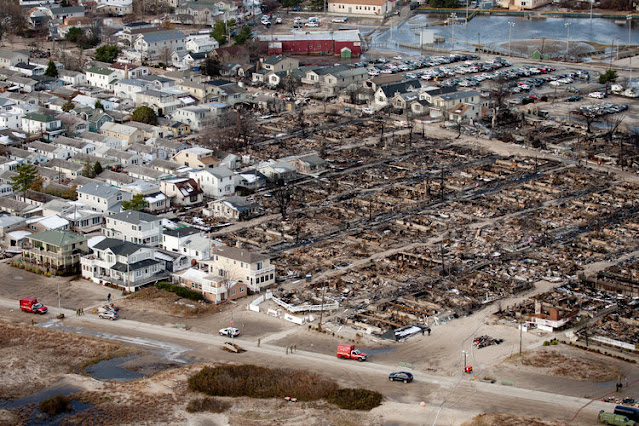Search This Blog
Most Popular
Aerogel for Building Insulation - Beginners Guide
March 25, 2025
How to Heatproof Buildings with Resilient Materials?
March 24, 2025
Categories
- Building Construction (82)
- Building Materials (82)
- Columns (2)
- Concrete Beam (3)
- Concrete Construction Techniques (4)
- Concrete Mix Design (10)
- Concrete Repair (14)
- Concrete Slab (10)
- Construction Equipment (16)
- Construction News (7)
- Design of Structures (15)
- Engineering Drawing (1)
- Estimation (3)
- Geotechnical engineering (26)
- Highway Engineering (11)
- Innovations (30)
- Material Testing (9)
- Matrix Analysis of Structures (2)
- Mechanical Engineering (3)
- Strength of Materials (2)
- Structural Analysis (17)
- Structural Design (21)
- Structures (17)
- Transportation Engineering (9)
New York City Implements Permeable Concrete for Resilient Reconstruction
Neenu
June 19, 2023
New York City is making remarkable strides in rebuilding and adapting to the challenges posed by climate change. In a recent construction project in Queens, the city has utilized permeable concrete and embraced new stormwater regulations to promote sustainable development.
 |
| Beach 108th Street in Rockaway, Queens, which was damaged by Hurricane Sandy, was rebuilt with porous pavement. Courtesy of New York City Department of Design and Construction |
This article explores the significance of the project and its connection to the aftermath of Hurricane Sandy, as well as the adoption of the Unified Stormwater Rule.
Recovering from Hurricane Sandy
Hurricane Sandy, a devastating storm that struck New York City in 2012, left a lasting impact on the city's infrastructure. To address the extensive damage caused by the storm, the City of New York secured significant funding through the Disaster Relief Appropriations Act of 2013.
This funding aimed to rebuild housing, support businesses, and enhance coastal defenses [2]. Now, years later, the city continues to rebuild and adapt to prevent future disasters.
Rebuilding Beach 108th Street
Beach 108th Street in Rockaway, Queens, was one of the areas heavily affected by Hurricane Sandy. In a remarkable $16.6 million infrastructure project, the city has reconstructed this street using permeable concrete.
The project, which began in March 2021, involved the installation of over 11,000 square feet of permeable concrete slabs along the curb line [1]. This innovative pavement allows stormwater to seep through the concrete, reducing strain on the sewer system and promoting natural water absorption into the ground.
Benefits of Permeable Concrete
The use of permeable concrete on Beach 108th Street provides numerous advantages. By allowing stormwater to drain through the pavement and into the ground, the project prevents overwhelming the sewer system during heavy rainfall. This approach not only reduces the risk of flooding but also improves the health of Jamaica Bay, a significant water body in the area [1].
Additionally, the project serves as a model for future construction projects, showcasing the potential of permeable concrete in creating sustainable and resilient infrastructure.
Implementing the Unified Stormwater Rule
To further enhance stormwater management practices, New York City introduced the Unified Stormwater Rule (USWR) in 2022. Under this rule, developers are required to incorporate green infrastructure in new development and redevelopment projects that discharge city sewers [3]. The USWR encompasses both Municipal Separate Storm Sewer System (MS4) and Combined Storm Sewer (CSS) areas, ensuring comprehensive stormwater management throughout the city.
Complying with the USWR, the Beach 108th Street project aligns with the city's commitment to sustainable development. By incorporating permeable concrete, the project exemplifies the adoption of green infrastructure solutions, reducing the environmental impact of stormwater runoff and promoting a more resilient urban environment [3].
Complying with the USWR, the Beach 108th Street project aligns with the city's commitment to sustainable development. By incorporating permeable concrete, the project exemplifies the adoption of green infrastructure solutions, reducing the environmental impact of stormwater runoff and promoting a more resilient urban environment [3].
Conclusion
New York City's use of permeable concrete on Beach 108th Street represents a significant milestone in the city's ongoing efforts to rebuild and adapt to climate change. By embracing sustainable construction practices and adhering to the Unified Stormwater Rule, the city is paving the way for resilient infrastructure.
The successful implementation of permeable concrete on Beach 108th Street sets an inspiring example for future construction projects, ensuring a more sustainable and resilient future for New York City.
References
- "New York City rebuilds $16.6M corridor with permeable concrete." https://www.constructiondive.com/news/new-york-city-rebuilds-16m-corridor-with-permeable-concrete/652999/
- "Impact of Hurricane Sandy."
- "NYC Adopts Sweeping New Stormwater Rule."
Most Visited
Sieve Analysis of Aggregates - ASTM Standard
August 11, 2021
How to Calculate Cement Required for Floor Tiling?
July 02, 2020
What are Infiltration Wells?
April 15, 2024
Cross-Section of a Road – Geometric Design of Highways
February 26, 2021
How to Choose Good Quality Aggregates for Construction?
August 10, 2021
Traverse Surveying - Objective, Method and Procedure
January 19, 2022
Construction ERP System – A Comprehensive Guide
December 12, 2024
Top 7 Waterproofing Materials for Concrete Roofs
December 13, 2024
Search This Blog
MUST READ
What is PERT? Objectives, Pros & Cons
September 10, 2017
Terzaghi's Equation: Soil Bearing Capacity for Foundations
March 02, 2022
Contact Form
Footer Menu Widget
Created By SoraTemplates | Distributed By Gooyaabi Templates


0 Comments
Commenting Spam Links Are Against Policies